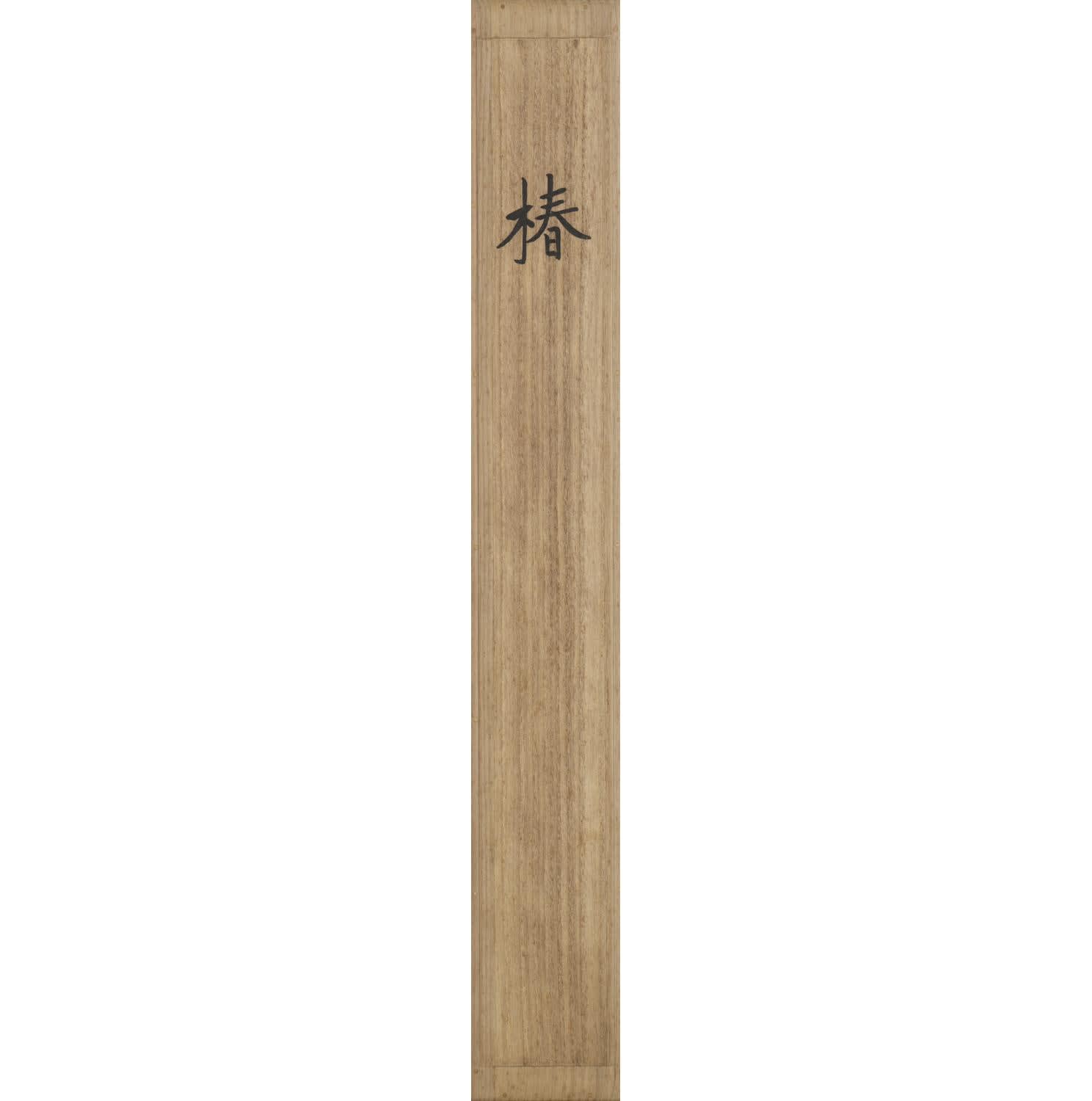Murakami Kagaku (1888−1939)
Camellias
Color on silk, hanging scroll
Murakami Shin registration
With a box signed by the artist, double boxed
Seal: Suzaku
30.8 x 42.8 cm
127.2 x 59.2 cm (overall)
Further images
When it comes to Murakami Kagaku’s flower painting, peonies would be unquestionably the first to be mentioned. Yet camellias are also a frequent subject in his oeuvre. A number of works might emerge out of the mind; depicted from different angles, each shows subtle variations from others, which never bores the viewer.
How tall at all is this camellia tree? It might be of human size sketched right from its side, or far taller than the painter that only its very top is depicted; or rather, it is planted in a garden, swinging in the wind, viewed and captured from a window. Such a composition liberates the viewer’s imagination, elongating it to even outside of the frame.
In the case of depicting peonies, the double-flowered ones in particular, Kagaku layers the thin petals one over another with vivid red pigment, sometimes with thin and thick applications of ink. In Japan, camellias are called Tsubaki, which is originated in tsuya-ba-ki, literally glossy-leaf-tree. Here, the thick and glossy leaves and the buds of camellias are exquisitely represented by Kagaku’s masterly skills in tarashikomi, or dripping-in, technique.
Murakami Kagaku (nihonga painter; 1888−1939)
Osaka-born nihonga painter. His real name is Shin’ichi. His original family name is Takeda, later changed to Murakami. Graduated from Kyoto Municipal Special School of Painting. Selected to exhibit at Bunten (Ministry of Education Art Exhibition) and given the tokusen (special prize that grants entry without examination in the following year) privilege in 1916. Dissatisfied with Bunten’s idealism and founded Kokuga sosaku kyokai (Association for the Creation of National Painting) with Tsuchida Bakusen, Ono Chikkyo, Sakakibara Shiho, and Nonagase Banka in 1918. Moved to Ashiya and Kobe due to worsening health. Led a recluse life away from the art world ever since. Concentrated on the subjects of Buddhism and the Rokkosan mountains, his works possess a meditative and spiritual tone.
How tall at all is this camellia tree? It might be of human size sketched right from its side, or far taller than the painter that only its very top is depicted; or rather, it is planted in a garden, swinging in the wind, viewed and captured from a window. Such a composition liberates the viewer’s imagination, elongating it to even outside of the frame.
In the case of depicting peonies, the double-flowered ones in particular, Kagaku layers the thin petals one over another with vivid red pigment, sometimes with thin and thick applications of ink. In Japan, camellias are called Tsubaki, which is originated in tsuya-ba-ki, literally glossy-leaf-tree. Here, the thick and glossy leaves and the buds of camellias are exquisitely represented by Kagaku’s masterly skills in tarashikomi, or dripping-in, technique.
Murakami Kagaku (nihonga painter; 1888−1939)
Osaka-born nihonga painter. His real name is Shin’ichi. His original family name is Takeda, later changed to Murakami. Graduated from Kyoto Municipal Special School of Painting. Selected to exhibit at Bunten (Ministry of Education Art Exhibition) and given the tokusen (special prize that grants entry without examination in the following year) privilege in 1916. Dissatisfied with Bunten’s idealism and founded Kokuga sosaku kyokai (Association for the Creation of National Painting) with Tsuchida Bakusen, Ono Chikkyo, Sakakibara Shiho, and Nonagase Banka in 1918. Moved to Ashiya and Kobe due to worsening health. Led a recluse life away from the art world ever since. Concentrated on the subjects of Buddhism and the Rokkosan mountains, his works possess a meditative and spiritual tone.









